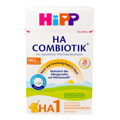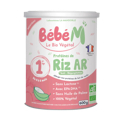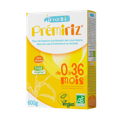Changing your baby's formula to a more broken-down formula will help if your baby has eczema because of an intact protein allergy. By taking out the intact proteins which irritate your child's skin, the skin may start to clear.
Baby Eczema - Causes, Symptoms & Treatments
By: Suzanne Renee' - Updated December 18, 2023 - 15 Minute Read
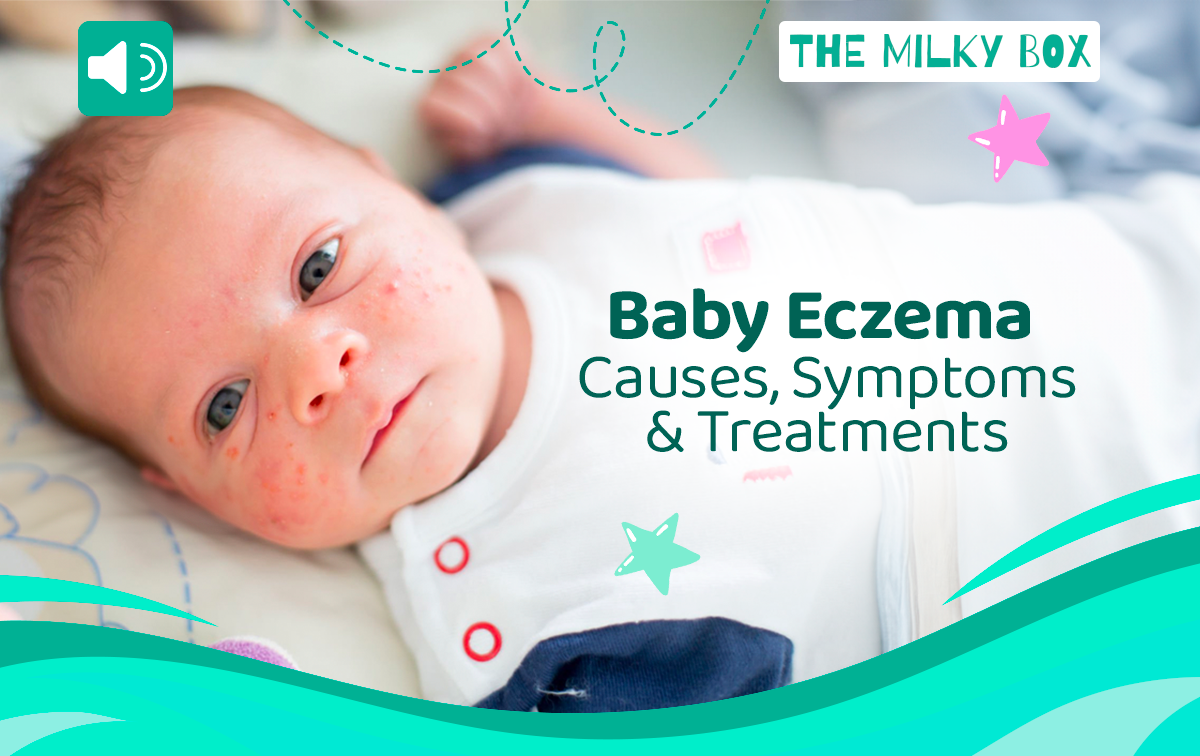
Eczema is one of the most common skin conditions in babies and toddlers. This ailment affects about 9.6 million children in the US. This non-contagious skin condition often appears within the first six months of a baby's life.
Red, itchy, inflamed skin can be uncomfortable and the cause of your infant’s restless nights and fussy days. Unfortunately, eczema is a chronic skin condition. But don't worry!
In this article, we will look into some home remedies and nutrition tips that can ease or reduce your little ones' symptoms. Let's get started!
Table of Contents:
1. What is Eczema?
2. What are the Symptoms of Baby Eczema?
3. Types of Eczema in Children
4. What Causes Eczema in Babies?
5. Treatments for Children with Eczema
6. What is the Best Formula for Eczema?
7. Top Brands: Hypoallergenic Baby Formula for Eczema
9. Best Formula for Babies with Eczema
10. Frequently Asked Questions
What is Eczema?
Eczema does not look the same on every baby but is always characterized by dry skin, itchiness, and raised rash on the skin.
In babies with lighter- skin, it usually looks like patches of red skin. The rash might look purplish, brownish, or grayish in darker-skinned babies. Babies can get the condition anywhere on their bodies, but most often, it affects their cheeks and the joints of their arms and legs.
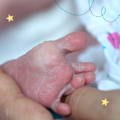
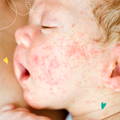
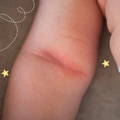
Cradle Cap
Like eczema, cradle cap consists of red, flaky skin. The cradle cap is much less itchy and irritated on the complete opposite spectrum.
It generally clears up by age eight months and usually appears on the scalp, sides of the nose, eyelids, eyebrows, and behind the ears.
There has been no direct link between eczema and cradle cap found. An infant could have one or the other or both.
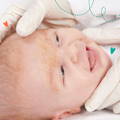
What are the Symptoms of Baby Eczema?
Eczema in infants tends to start as dry, scaly, itchy skin, mainly on the cheeks and scalp. It can also appear red, scaly, and oozy. Older children often develop itchy rashes in the folds, such as the creases of the knees and elbows.
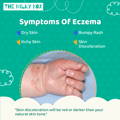
How is Baby Eczema Diagnosed?
Your family medical provider will diagnose eczema after a physical examination. The appearance of the rash on your baby’s skin leads to an accurate eczema diagnosis.
Your provider might offer additional tests to determine what caused symptoms to form on your baby’s skin. Tests include an allergy test, blood samples, and skin biopsy.
Types of Eczema in Children
Seven types of eczema can affect people of any age, but four specific types of skin conditions are most common in infants, toddlers, and children.
Atopic Dermatitis
The most usual form of eczema, atopic dermatitis, affects 13% of American children under eighteen. Atopic Dermatitis is often associated with children with asthma and hay fever, sometimes known as the “atopic triad.”
➡️ The rash from atopic dermatitis can be lighter or darker than standard skin color, often forming at the elbows and knees’ creases. Babies may develop a rash on their scalp and cheeks.
Contact Dermatitis
As the name implies, contact dermatitis results when a substance touches your child’s skin. There are two subtypes. Allergic contact dermatitis triggers an immune system response, while irritant contact dermatitis immediately affects the skin.
➡️ A rash from contact dermatitis may produce itchy bumps called hives, and skin in the area can become thick and scaly.
Seborrheic Dermatitis
This form of dermatitis affects areas of the skin with lots of sebaceous glands that produce skin oils that provide a protective layer on the skin. The back, nose, and scalp are the most affected areas, but they can also form lower on the face, in the diaper area, and folds around a baby’s body.
➡️ Skin rashes include a yellow crust and red skin, or there may be white or yellow flakes.
Dyshidrotic Eczema
This common form of eczema, called pompholyx (“bubble” in ancient Greek), is foot-and-hand, palmoplantar, and vesicular. The actual cause of dyshidrotic eczema is not known. It is more common in people with another form of eczema and tends to run in families, suggesting a genetic component.
➡️ Blisters on the soles of the feet and palms of the hands identify dyshidrotic eczema. These blisters can be itchy, and large blisters occasionally form, which are often more painful. After the blisters pass, affected skin can feel dry and spongy.
What Causes Eczema in Babies?
The complex interplay of genetic components, environmental exposures, as well as ability to digest well all can contribute to eczema development. Many things, from the climate to possible allergens, can aggravate eczema.
Eczema runs in families predisposed to other atopic diseases, such as food allergies, asthma, and hay fever. Individuals with atopic dermatitis may lack specific proteins in the skin, which leads to greater sensitivity.
Babies are more likely to develop eczema when one or both parents have atopic eczema or other children with skin conditions. The excellent news is that atopic eczema is not infectious, so it will not be passed on through close contact.
What Triggers Baby Eczema?
Your baby’s skin is unique and can react to different environmental triggers that cause symptoms of baby eczema. Some of the most common triggers surround little ones every day.
Dry Skin
Low humidity, significantly during winter when homes are well-heated and dry, can trigger an eczema flare-up. Heat and sweat during the seasons that cause dry air can also irritate eczema.
Irritants
Everything from scratchy wool clothes, polyester, perfumes, and body and laundry soaps, can all trigger symptoms.
Stress
Children with eczema may react to stress by flushing, which leads to itchy, irritated skin and ramping up their eczema symptoms.
Allergens
Experts believe removing cow’s milk, peanuts, eggs, or certain fruits from a child’s food may help control eczema symptoms. Again, this is as unique as your baby, and this may come down to family history.
Treatments for Children with Eczema
Understanding your baby's symptoms and triggers is essential for managing eczema. Since there is not just one “cure” for eczema, calming measures can reduce skin infections and inflammation as well as quell recurrences.
Treating your child’s eczema as soon as you notice it is essential. Quick action can prevent the condition from worsening, making it more challenging to treat.
Baby Bath
Bathing helps to eliminate dirt and other potential irritants from your baby’s skin. When bathing your baby, use lukewarm water and a mild, fragrance-free cleanser or medicated soap from your pediatrician. Rinse your child's skin twice to remove soap residue and limit your baby’s bath to five to 10 minutes.
Immediately after the bath, apply a fragrance-free moisturizer, considering thick creams and ointments are generally more effective than lotions or oils. Moisturize your baby’s skin twice daily or as often as necessary to achieve relief.
Topical Corticosteroids
Commonly used to treat eczema, topical corticosteroids help reduce inflammation and symptoms. Found over the counter or by prescription, they come in many forms, including ointments, creams, sprays, and lotions. Work with your dermatologist to identify the best corticosteroid for your baby and apply it immediately after your baby’s bath before applying moisturizer.
Since babies are more sensitive to corticosteroids than adults, follow your family’s medical provider for directions on the treatment amounts, duration, and frequency to avoid side effects.
Identify Triggers
Identifying your baby’s triggers will help families find ways to eliminate or prevent them. For example, if your baby’s saliva triggers eczema on the face, apply shea butter or jojoba butter, around your baby’s mouth before feeding and napping.
Home Remedies for Eczema
Home remedies for eczema can be simple or complex. The most accessible, effective treatment is to make changes to avoid or remove whatever is causing the allergic reaction. Remember that infant eczema must be controlled if there is no cure.
💡Change your laundry detergent and get rid of fabric softener. Liquid detergents may be less irritating than powders or tablets, and fabric softeners stay directly on clothes that can irritate babies’ skin. Use an extra rinse cycle when you wash to remove residue.
💡Put on a cool compression. Holding a clean, damp cloth against the skin when baby has a flare-up can ease itching.
💡Add colloidal oatmeal to the bath or as a paste on your skin. This finely ground oatmeal helps with itchy, dry skin.
💡Add apple cider vinegar to bath water. Use an amount between 1-2 cups.
💡Moisturize your infant’s skin twice a day. Avoid lotions with fragrances or other irritating ingredients. Look for the National Eczema seal of approval and consult www.ewg.org/skin-deep database for non-toxic, effective and safe personal care products. Avoid products with parabens, phthalates, and mineral oil additives.
💡Apply coconut oil to damp skin once or twice a day. It may fight the bacteria that can cause skin infections. Check the label to be sure it’s “virgin” or “cold-pressed” oil. Sunflower oil, twice daily, can also help by holding moisture and easing inflammation. Always check with your pediatrician for allergic reactions to nut or seed oils.
💡Specilized baby formula to avoid flare-ups. Hypoallergenic formulas are designed to soothe inflammation that can cause skin worries if your baby is at risk of a milk protein allergy.
What is the Best Formula for Eczema?
The best way to manage your baby's eczema is to know and avoid the things that cause eczema flare-ups. For about 7% of infants under a year old, eczema is a common symptom brought on by a Cow's Milk Protein Allergy.
Hypoallergenic Baby Formula for Eczema
The proteins in hypoallergenic baby formula are broken down into smaller particles, making them less likely to cause an allergic reaction in babies. Consequently, the formula is less likely to trigger a potential allergic reaction that can show up as eczema on your infant’s skin.
Partially Hydrolyzed Baby Formula
In the partially hydrolyzed hypoallergenic formula, the milk proteins are only partially broken down to make them more easily digestible for babies.
For sensitive babies partially broken down, these formulas may help soothe the responses that produce an allergic reaction.
Extensively Hydrolyzed Baby Formula
Proteins completely broken down into tiny compounds are less likely to trigger allergic reactions in infants. For babies with eczema, this can mean fewer skin worries.
Top Brands: Hypoallergenic Baby Formula for Eczema
There is a variety of hypoallergenic formulas in the market today, so choosing a trusted brand with organic certification is essential.
While both European and American formulas are meant to supplement or substitute for breast milk in a baby’s diet, and both offer options for hypoallergenic baby formula. However, there are a few other key differences to note.
American formulas are sometimes sweetened with non-lactose sugars such as corn syrup or sucrose. In Europe, formulas use lactose (milk sugar) as the primary sweetener. American formulas are under-regulated and toxic ingredients such as heavy metals and soy. European baby formula has a system of checks and balances to support your baby’s healthy growth.
Hands down, European baby formulas offer your family the best nutrition to suit every digestive and nutritional need, including hydrolyzed formulas.
HiPP Baby Formula
HiPP International knows that organic farming makes a substantial difference to the health of our planet, and at HiPP, they believe that organic farming is best for babies and our animals too.
Using over 50 years of nutritional research and the best organic ingredients, HiPP is able to provide the very best in organic formula milk for your baby, including hypoallergenic options for your sensitive baby.
HiPP HA Baby Formula for Eczema
HiPP HA contains partially hydrolyzed protein, which means it is specifically formulated for the most sensitive little ones who may be showing distress due to ingredients found in other baby formulas. They are designed to help alleviate some causes of adverse skin reactions.
HiPP HA Germany, at all stages, contains probiotics and prebiotics for improved gut health. Additionally, this formula has natural omega-3 and omega-6 DHA and ARA essential for brain and eye development. This clean formula contains no GMOs, soy, sugar, corn syrup, artificial flavors, synthetic preservatives, or sweeteners.
HiPP Comfort Baby Formula for Eczema
HiPP Comfort contains partially hydrolyzed protein and fats uniquely designed to be one of the gentlest formulas with reduced lactose for ease of digestion and absorption, meaning inflammation is less likely to happen.
Additionally, HiPP Comfort contains both prebiotics and probiotics, which help your baby develop healthy natural gut bacteria that can improve and speed up the process of their digestive system's development.
Plant-based Formula for Eczema
Some parents find that using plant-based baby formula, such as rice-based protein, is tremendously helpful for children who suffer from eczema due to milk protein allergies. Nutritious, organic, and lactose-free, these milk alternatives can significantly affect eczema flare-ups.
Bebe M Organic Baby Formula for Eczema
Babies with cow milk allergies sometimes need more support than hydrolyzed baby formulas. Bébé M Organics offers lactose-free nutrition for the most sensitive babies and can soothe little ones with the most significant eczema symptoms.
Bébé Mandorle is an organically certified, 100% vegetable-based infant formula without animal products or by-products. They are designed with balanced natural plant-based oils and complimentary carbohydrates to naturally meet each milestone of your baby’s development.
Bébé M's rice milk infant formula is gluten-free, dairy-free, and organically produced in their sustainable Bioenterprise-certified plant.
Premibio Organic Vegan Baby Formula
Premibio Vegan is a certified organic formula containing no animal product or by-product. Thanks to its lactose-free content, Premibio can be suitable for babies experiencing difficulties digesting animal proteins, including baby eczema from birth through the toddler years.
This hydrolyzed rice formula is enriched with long-chain plant-sourced DHA and Omega-3 and Omega-6 from vegan sources; this unique baby formula has a nutrient content identical to traditional baby formula without worrisome allergic reactions.
When to Call a Doctor
While eczema symptoms are generally mild, if your child suffers from severe itching and cracking of their skin or blisters, you should seek medical treatment for your infant. Severe cases may need blood work, such as food sensitivity testing, to help narrow down triggers.
If the baby develops a fever, eczema is painful when touched, or itching flare-ups that your baby is inconsolable, please call your family care practice immediately.
Best Formula for Babies with Eczema
There's no “one cure” for baby eczema, but many children find their symptoms improve with the proper treatment, digestive support and avoidance of triggers. Focusing on the best home remedies and organic nutrition can reduce swelling, itchiness, and redness during flare-ups
The Milky Box has organic baby formulas for every physical and digestive need. Trusted nutrition is delivered to your family to help you prepare the perfect bottle of baby formula.
Frequently Asked Questions
Will changing my baby’s formula help with eczema?
Is there a cure for baby eczema?
No permanent cure for eczema exists, but specific home remedies, medical treatments, and organic nutrition can ease itching and prevent future flare-ups.
Do babies outgrow eczema?
Most of the time, eczema starts to go away by age 4. However, some children may have dry, sensitive skin into adulthood.
Disclaimer:
Please be aware that this information is based on general trends in babies, and it is not medical advice. Your doctor should be your first source of information and advice when considering any changes to your child’s formula and when choosing your child’s formula. Always consult your pediatrician before making any decisions about your child’s diet or if you notice any changes in your child.
Breastfeeding is the best nutrition for your baby because breast milk provides your child with all the essential nutrients they need for growth and development. Please consult your pediatrician if your child requires supplemental feeding.

Suzanne Renee' is an accomplished professional with extensive expertise in the area of infant nutrition, dedicated to promoting the health and wellbeing of children. She started this journey as a foster parent. Suzanne has emerged as a strong proponent of the European baby formula and has become a full time writer of the subject. In her free time, she enjoys camping, hiking and going to church.
Read Next:
Reviewed by Dr. Eric Wood, ND, MA

Dr. Wood is a licensed naturopathic doctor, with a doctorate degree from the Canadian College of Naturopathic Medicine in Toronto, Canada. He received his post-graduation certification in Mind Body Medicine at Harvard University.
With 15 years of experience, Dr. Wood is an Associate Professor of Holistic Nutrition at the American College of Health Sciences in Portland, Oregon. Dr. Wood is an educator, clinician, author, media figure, consultant, and owns his own holistic (naturopathic) medical practice in Ft. Lauderdale, Florida. Dr. Wood is currently researching and drafting books on cancer and pediatrics.
Outside of the medical profession, Dr. Wood loves singing with the Miami Lyric Opera and is an avid musician in South Florida. He also loves spending time with his wife and kids.
